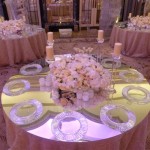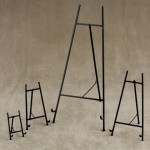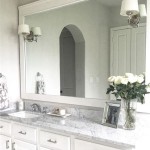Hide Flat Screen TV Behind a Mirror: A Seamless Blend of Technology and Design
Integrating technology seamlessly into home decor is a growing trend. One popular approach involves concealing a flat-screen television behind a mirror. This method offers a clean, uncluttered aesthetic when the TV is off, allowing the mirror to serve as a functional and decorative element. When the TV is on, the mirror becomes transparent, revealing the screen beneath. This article explores the options and considerations for achieving this hidden technology setup.
Types of Mirror TVs
Several methods exist for creating the illusion of a disappearing television. Each option offers distinct advantages and disadvantages in terms of cost, image quality, and installation complexity.
Two-way Mirrors: These specialized mirrors offer partial reflectivity, allowing some light to pass through while reflecting the rest. When a TV is placed behind a two-way mirror, the mirror reflects the surrounding room when the TV is off. When the TV is turned on, the light emitted from the screen passes through the mirror, making the screen visible. The quality of the image depends on the mirror's reflectivity and the TV's brightness.
Mirror TV Kits: These kits often include a framed two-way mirror and the necessary mounting hardware for the TV. They simplify the installation process, providing a pre-engineered solution. Kits are available in various sizes to accommodate different TV dimensions.
Custom-Built Solutions: For more specialized applications, such as integrating a TV into existing cabinetry or unusual spaces, a custom-built solution may be necessary. This involves sourcing a two-way mirror separately and designing a custom frame and mounting system. This approach offers maximum flexibility but requires more planning and expertise.
Factors Affecting Image Quality
Several factors can impact the clarity and vibrancy of the image when viewed through a mirror. Understanding these factors is crucial for selecting the appropriate components and achieving optimal viewing experience.
Mirror Reflectivity: The reflectivity of the mirror is a key determinant of image quality. Higher reflectivity means more light is reflected, potentially diminishing the brightness and clarity of the TV image. Lower reflectivity allows more light to pass through, improving image quality but potentially making the mirror less effective when the TV is off.
TV Brightness: A brighter TV is essential for optimal viewing through a mirror. The TV needs to overcome the reflectivity of the mirror, and a higher brightness setting ensures the image remains clear and vibrant.
Ambient Lighting: The surrounding light in the room also plays a role. Excessive ambient light can wash out the TV image, especially in brightly lit spaces. Consider incorporating lighting controls or window treatments to manage ambient light levels.
Installation Considerations
Proper installation is critical for both the functionality and aesthetics of a hidden TV setup. Several factors need to be considered during the planning and installation phases.
Space Behind the Mirror: Adequate space is required behind the mirror to accommodate the TV and any necessary wiring or ventilation. The depth of the space will depend on the size and thickness of the TV.
Ventilation and Heat Dissipation: TVs generate heat, and proper ventilation is essential to prevent overheating. Ensure the enclosure behind the mirror allows for sufficient airflow to dissipate heat and maintain optimal operating temperatures.
Wiring and Cable Management: Concealing the wiring for the TV and other connected devices is crucial for a clean and professional look. Plan the cable routing in advance and consider using cable management solutions to keep wires organized and hidden.
Choosing the Right Mirror
The selection of the mirror itself is crucial. Beyond the reflectivity, other factors influence the overall effectiveness and aesthetic appeal of the installation.
Mirror Size and Shape: The mirror should be sized appropriately to cover the TV completely while also complementing the surrounding decor. Consider the overall dimensions of the wall and the desired aesthetic when choosing the mirror's size and shape.
Frame Style and Material: The frame of the mirror contributes significantly to the overall design. Choose a frame style and material that aligns with the existing decor and complements the surrounding furnishings.
Smart Home Integration
Integrating a mirror TV into a smart home system offers further convenience and control.
Automated Controls: Connecting the TV and mirror to a smart home hub allows for automated control. The TV can be programmed to turn on and off at specific times, or in conjunction with other smart home devices.
Voice Control: Voice assistants can be integrated to control the TV and other connected devices hands-free, adding another layer of convenience to the setup.

Tv Behind A Mirror Living Room In Bedroom

The Living Room Tv As We Know It Is Over Laurel Home

70 Framed Samsung Mirror Tv Television

Tv Coverups Hide Your With Art Or A Frame Mirror

Television Framed Frameless Dielectric Mirror Tv

Tv Behind Two Way Mirror High Def Forum Your Definition Community Resource Wall Mounted

6 X Vanityvision Mirror Sample Television

Tv Coverups Hide Your With Art Or A Frame Mirror

Hide Your Tv Behind This Magic Mirror The Gadgeteer

Eclipse Tv Cover By Electric Mirror Tvc 43 Emr615297








